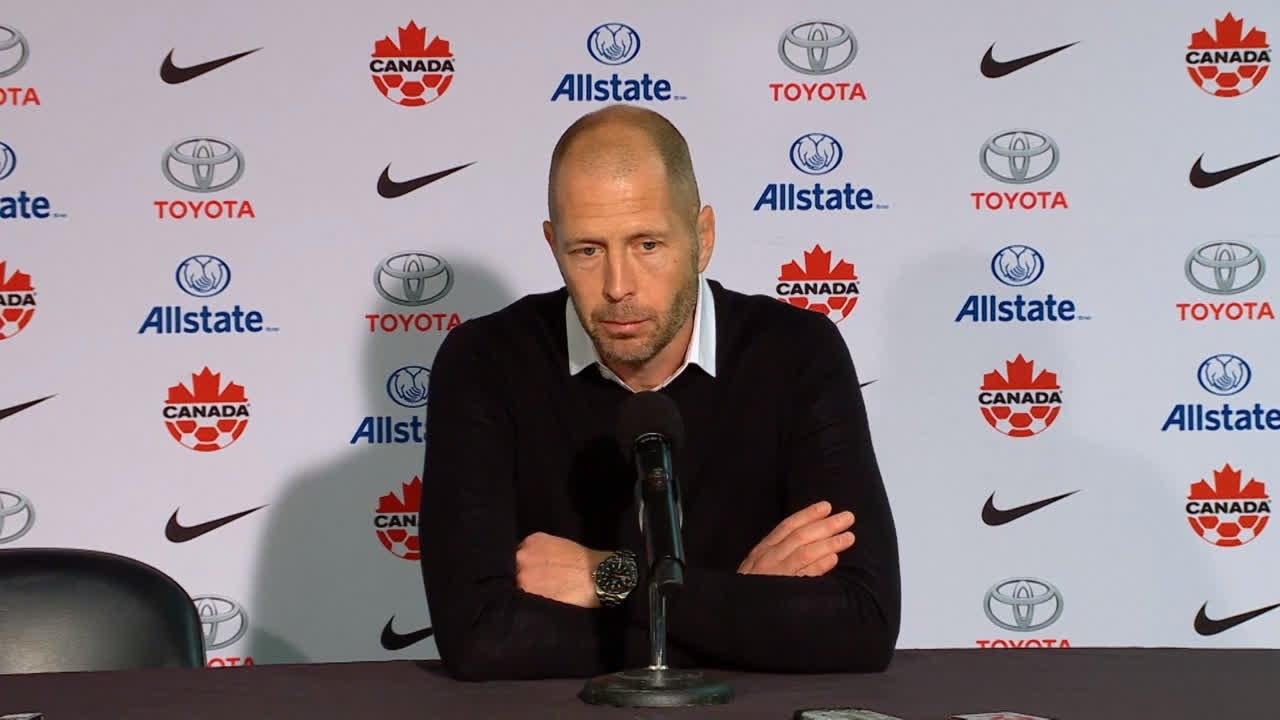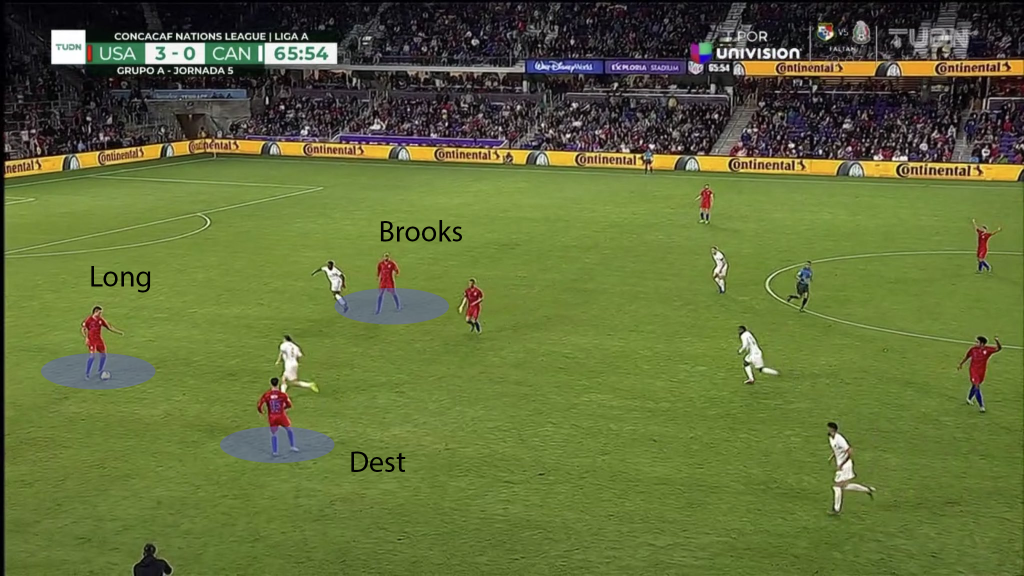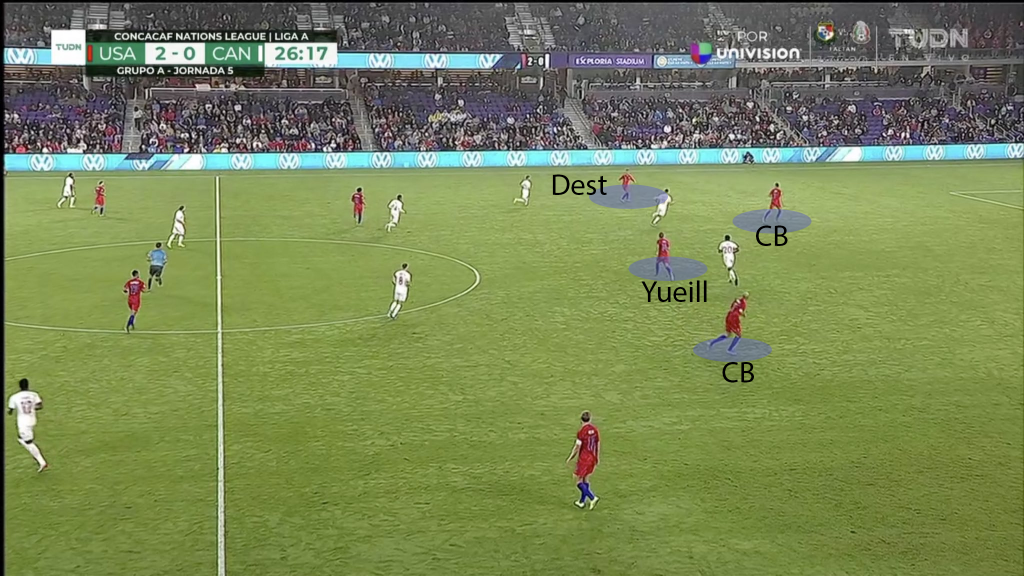“The idea is that we’re an attacking-based team that wants to create goal-scoring opportunities by disorganizing the opponent,” said Berhalter. “We’ll do that in a number of different ways. What I’d say is that consistently over my time at Columbus we’ve done it through build up where we start with the ball at the back, the team tries to press us and we play through to try to create goal-scoring opportunities. We are making the field big.”
That quote was from US national team coach Gregg Berhalter at a press conference when he first accepted the job.
The idea communicated was clear: He wanted to be a possession orientated team. A team that breaks lines. A team that builds from the back. A team that presses the opponent and dictates play through possession.

Sounds like a breath of fresh air, right? On the surface it does. But it’s not just results that Berhalter’s group has struggled with. Against Canada on November 15, 2019, the USMNT abandoned all their ideas of having the identity – losing the possession battle 36% to 64%.
Some people saw this as a good thing, and said things like: “Look, Gregg is showing he can adjust the style of play.”
The problem with this is it’s Canada, and we’re playing at home. If we can’t see a clear style of play versus a mediocre team while playing at home, how can we expect it to be successfully executed when we play better teams in a challenging environment?
The “red flags” of the Berhalter reign have come from the style of play, more than the actual results.
In order to demonstrate progress on that front, there’s a couple things needed:
- We need to select players who are most adept at this particular style. From what we’ve seen, many of the current selections have shown they can’t do it at a high level. They aren’t good enough on the ball, lack the technical ability and the Soccer IQ/speed of thought, as well as the tactical component.
- The coaching staff needs to do a thorough job in training the players the specifics within the game model. For instance, how exactly to build from the back under a variety of scenarios for a particular opponent. In what situations the 6 should slide between the center backs. When should the outside backs look to combine with the wingers. How to have proper spacing in possession. Even simple things like body shape when receiving the ball out of the back – Brooks and Long had moments where not adjusting led to [preventable] turnovers.
Here’s just a couple of plays used to illustrate how things generally break down from the back for the US:


So where do we go from here?
As mentioned, if Gregg is serious about playing the style he promised, there needs to be an overhaul in the roster. The Cuba game would have been the perfect time to play talented young players who have demonstrated they have the proper attributes.
Players like Richard Ledezma, Alex Mendez, Chris Richards, Uly Llanez, and Chris Gloster should have made their senior national team debuts. Moving forward, two other players who should be looked at: Darlington Nagbe and Efrain Alvarez (there are question marks on whether either would accept a selection).
The other main area which must be improved is the tactical element. The spacing in possession, when/where to press, how to build out of the back starting with the GK, and the positioning of the three midfielders.
Again, you need both. You need the tactical elements, and you need to select the right players.
Also, never forget that one can play as planned and lose, like one can also play poorly and win. So the final score is not the best way to judge whether progress is being made on the identity front.
Too often we just look at the final result and jump to conclusions.
The fact is the National Team has not implemented the style of play that was promised. That could be understandable if we were playing against world powers, but our opponents have been mediocre teams at best. In the case of Canada, we couldn’t even execute on home soil.
Until the identity that was promised is continually, and consistently, shown, progress is not being made.
Of course we will qualify for the 2022 World Cup, but [with the trajectory we’re on] we will not close the gap with the top 20 teams in the world. And that, is not progress.
Coaching Education Program
This is brought to you by the 3four3 coaching education program.
Learn more and join over 400 coaches using our proven possession-based methodology.
Leave a Reply